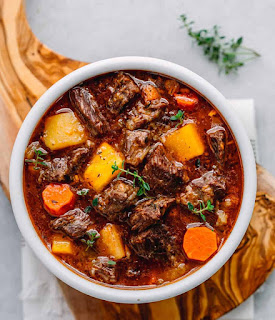 |
The photo is titled Janice and Francis, Christmas 1958. Those apron-clad ladies are
my grandmother, Francis Rumppe and my mother, Janice serving up pie. Mom was pregnant with my older brother Mike in this photo. |
"Save that. I can use it for soup."
~Jan Rumppe
This blog came about after years of my sister Mary (Mt Vernon, Iowa) trying to convince my mother that the two of them needed to make a family recipe book. Actually, Mom did not seem to need a lot of convincing. She seemed to think it was a good idea, but the distance between them was (at the time) prohibitive. In 1998, I was getting my Masters Degree in Educational Technology. I had just learned about this new thing called a "blog". After listening to the two of them discuss the need for the recipe book for the umpteenth time, I suggested the two put the recipes into a blog. My sister's reaction is kinda funny now that we are all here in the future together, but she asked, "Why would having all of these recipes on a computer help? The computer is in the office and I cook in the kitchen?" "...the computer..." there were no mobile devices yet and a family only had one computer. Nevertheless, Mom was game and so, with her recipes and my knowledge of the then newfangled "hypertext markup language", this blog was cobbled together.
Jan Rumppe knew how to cook within her means. I come from a family of seven. As teachers, my parents needed to live within a budget. Mom managed to stretch a dollar by making many-what is known in Minnesota as-"hotdishes", (aka casseroles). Those that I remember most include, Tater-Tot Hotdish (with cream of asparagus soup), Ham Hotdish, Spaghetti, Lasagna and-on occasion-the ol' box of Hamburger Helper or can of "Manwich" came out. Mom also made large pots of beef and barley, or split-pea soup.
A pound of hamburger was able to feed all seven mouths and still have some leftovers for the next day. About once a week, we would have "left-over night" whereby the refrigerator was cleared out of all the extra left-over bits. Just to gussy-up these otherwise run-of-the-mill meals, Mom would dim the lights and light a candle to create some "OMMbiance".
 |
Recipe card boxes
|
Mom would often scour magazines like
Better Homes and Gardens for recipes. She had a knack for sifting through those that require too much effort, or hard-to-find ingredients. She also seemed drawn to the unusual combinations such as this recipe for
Roast Chicken With Rosemary and Pears, which she cut from the
Minneapolis Star Tribune when published October 23, 2019. Like many in those times, Mom kept recipe boxes filled with 3 × 5 cards-most had crinkled and/or butter-soaked edges. Trips to the grocery store often coincided with biweekly paydays. Mom would buy groceries for two weeks at a time.
I still remember her tearing up in aisle 6 of Target (Yes, Target had grocery stores back then), holding a box of Cheerios in her hands and seeing that the price had now gone above a dollar. Obviously, by today's measures, that would be quite a deal. But back in the 1970s, the cost of everything was going up and Mom had legitimate anxiety over how she was going to manage to make due with even less.
Some of my fondest memories of family were over the meals she would prepare for when guests were over. The meals of beef and cheese fondues sticks out the most in my mind. Because there were so many people just within our immediate family as well as any guests, there were at least two fondue pots going on either end of the table. The combined smells of burning Sterno fuel and hot peanut oil still bring me back to those meals that would seem to last for well over an hour. And while your meat cooked, you had a chance to talk, laugh and spill a glass of milk.
As you might have guessed, dinnertime was an every-night, whole-family event-well at least until we got to high school and then the sports, theatre and choir events would take precedent. Mom established this tradition. Imagine seven of us gathered around a table which always felt too small for all of us and our many elbows. After we said prayers over the food, we would dish our own plates and pass clockwise. It was then that we would be asked to share what we learned in school that day, or to talk about anything that got us excited. Often the conversations were upbeat, sometimes not, but either way those moments shared over a meal was the tool God (and Mom) used to keep the family glued together. It is one that I was more than happy to adopt when my wife and I started a family.
This blog may give you an idea of what was on our forks, but in truth, I believe it was the moments between the forkfuls that built my family. I appreciate my parents for keeping it together in the tough times and teaching my siblings and I, no matter the challenge, provide a little elbow room for some OMMbiance.
Now, would you please pass the hotdish?







































.jpg)